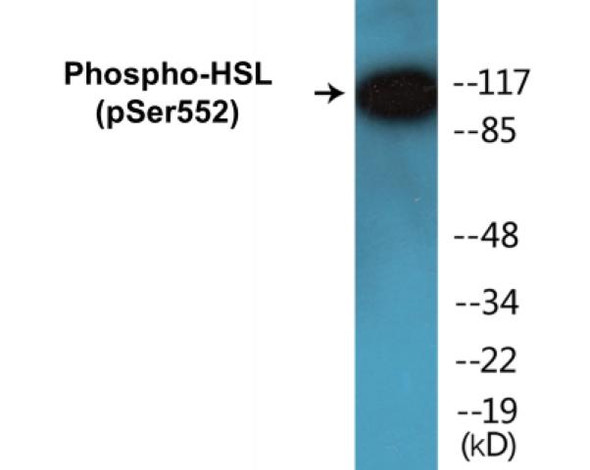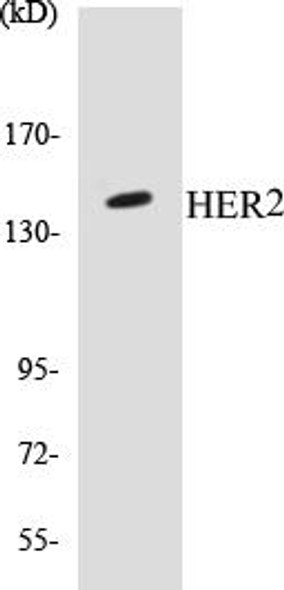Description
HSL Colorimetric Cell-Based ELISA Kit
The HSL Colorimetric Cell-Based ELISA Kit is an advanced assay designed for the precise measurement of hormone-sensitive lipase (HSL) levels in cell culture samples. This kit offers exceptional sensitivity and specificity, allowing for the accurate and reproducible quantification of HSL levels in a variety of cell types.Hormone-sensitive lipase is a key regulatory enzyme involved in lipid metabolism and energy homeostasis. Dysregulation of HSL activity has been linked to metabolic disorders such as obesity, diabetes, and cardiovascular disease, making it a valuable target for research and drug development.
The HSL Colorimetric Cell-Based ELISA Kit provides researchers with a powerful tool for studying the role of HSL in cellular lipid metabolism and its impact on metabolic health. With its easy-to-use format and reliable performance, this kit is an essential resource for scientists studying lipid metabolism and metabolic disorders.
| Product Name: | HSL Colorimetric Cell-Based ELISA |
| Product Code: | CBCAB00180 |
| ELISA Type: | Cell-Based |
| Target: | HSL |
| Reactivity: | Human, Mouse, Rat |
| Dynamic Range: | > 5000 Cells |
| Detection Method: | Colorimetric 450 nmStorage/Stability:4°C/6 Months |
| Format: | 96-Well Microplate |
The HSL Colorimetric Cell-Based ELISA Kit is a convenient, lysate-free, high throughput and sensitive assay kit that can detect HSL protein expression profile in cells. The kit can be used for measuring the relative amounts of HSL in cultured cells as well as screening for the effects that various treatments, inhibitors (ie siRNA or chemicals), or activators have on HSL.
Qualitative determination of HSL concentration is achieved by an indirect ELISA format. In essence, HSL is captured by HSL-specific primary antibodies while the HRP-conjugated secondary antibodies bind the Fc region of the primary antibody. Through this binding, the HRP enzyme conjugated to the secondary antibody can catalyze a colorimetric reaction upon substrate addition. Due to the qualitative nature of the Cell-Based ELISA, multiple normalization methods are needed:
| 1. | A monoclonal antibody specific for human GAPDH is included to serve as an internal positive control in normalizing the target absorbance values. |
| 2. | Following the colorimetric measurement of HRP activity via substrate addition, the Crystal Violet whole-cell staining method may be used to determine cell density. After staining, the results can be analysed by normalizing the absorbance values to cell amounts, by which the plating difference can be adjusted. |
| Database Information: | Gene ID: 3991, UniProt ID: Q05469, OMIM: 151750, Unigene: Hs.656980 |
| Gene Symbol: | LIPE |
| Sub Type: | None |
| UniProt Protein Function: | HSL: hormone sensitive lipase is a lipolytic enzyme of the 'GDXG' family. Plays a rate limiting step in triglyceride lipolysis. In adipose tissue and heart, it primarily hydrolyzes stored triglycerides to free fatty acids, while in steroidogenic tissues, it principally converts cholesteryl esters to free cholesterol for steroid hormone production. Rapidly activated by cAMP-dependent phosphorylation under the influence of catecholamines. Dephosphorylation and inactivation are controlled by insulin. |
| UniProt Protein Details: | Protein type:EC 3.1.1.79; Lipase Chromosomal Location of Human Ortholog: 19q13.2 Cellular Component: lipid particle Molecular Function:protein binding Biological Process: lipid catabolic process; protein amino acid phosphorylation Disease: Abdominal Obesity-metabolic Syndrome 4 |
| NCBI Summary: | The protein encoded by this gene has a long and a short form, generated by use of alternative translational start codons. The long form is expressed in steroidogenic tissues such as testis, where it converts cholesteryl esters to free cholesterol for steroid hormone production. The short form is expressed in adipose tissue, among others, where it hydrolyzes stored triglycerides to free fatty acids. [provided by RefSeq, Jul 2008] |
| UniProt Code: | Q05469 |
| NCBI GenInfo Identifier: | 145559491 |
| NCBI Gene ID: | 3991 |
| NCBI Accession: | Q05469.4 |
| UniProt Secondary Accession: | Q05469,Q3LRT2, Q6NSL7, |
| UniProt Related Accession: | Q05469 |
| Molecular Weight: | 84,128 Da |
| NCBI Full Name: | Hormone-sensitive lipase |
| NCBI Synonym Full Names: | lipase E, hormone sensitive type |
| NCBI Official Symbol: | LIPE |
| NCBI Official Synonym Symbols: | HSL; LHS; AOMS4; FPLD6 |
| NCBI Protein Information: | hormone-sensitive lipase |
| UniProt Protein Name: | Hormone-sensitive lipase |
| Protein Family: | Hormone-sensitive lipase |
| UniProt Gene Name: | LIPE |
| UniProt Entry Name: | LIPS_HUMAN |
| Component | Quantity |
| 96-Well Cell Culture Clear-Bottom Microplate | 2 plates |
| 10X TBS | 24 mL |
| Quenching Buffer | 24 mL |
| Blocking Buffer | 50 mL |
| 15X Wash Buffer | 50 mL |
| Primary Antibody Diluent | 12 mL |
| 100x Anti-Phospho Target Antibody | 60 µL |
| 100x Anti-Target Antibody | 60 µL |
| Anti-GAPDH Antibody | 60 µL |
| HRP-Conjugated Anti-Rabbit IgG Antibody | 12 mL |
| HRP-Conjugated Anti-Mouse IgG Antibody | 12 mL |
| SDS Solution | 12 mL |
| Stop Solution | 24 mL |
| Ready-to-Use Substrate | 12 mL |
| Crystal Violet Solution | 12 mL |
| Adhesive Plate Seals | 2 seals |
The following materials and/or equipment are NOT provided in this kit but are necessary to successfully conduct the experiment:
- Microplate reader able to measure absorbance at 450 nm and/or 595 nm for Crystal Violet Cell Staining (Optional)
- Micropipettes with capability of measuring volumes ranging from 1 µL to 1 ml
- 37% formaldehyde (Sigma Cat# F-8775) or formaldehyde from other sources
- Squirt bottle, manifold dispenser, multichannel pipette reservoir or automated microplate washer
- Graph paper or computer software capable of generating or displaying logarithmic functions
- Absorbent papers or vacuum aspirator
- Test tubes or microfuge tubes capable of storing ≥1 ml
- Poly-L-Lysine (Sigma Cat# P4832 for suspension cells)
- Orbital shaker (optional)
- Deionized or sterile water
*Note: Protocols are specific to each batch/lot. For the correct instructions please follow the protocol included in your kit.
| Step | Procedure |
| 1. | Seed 200 µL of 20,000 adherent cells in culture medium in each well of a 96-well plate. The plates included in the kit are sterile and treated for cell culture. For suspension cells and loosely attached cells, coat the plates with 100 µL of 10 µg/ml Poly-L-Lysine (not included) to each well of a 96-well plate for 30 minutes at 37°C prior to adding cells. |
| 2. | Incubate the cells for overnight at 37°C, 5% CO2. |
| 3. | Treat the cells as desired. |
| 4. | Remove the cell culture medium and rinse with 200 µL of 1x TBS, twice. |
| 5. | Fix the cells by incubating with 100 µL of Fixing Solution for 20 minutes at room temperature. The 4% formaldehyde is used for adherent cells and 8% formaldehyde is used for suspension cells and loosely attached cells. |
| 6. | Remove the Fixing Solution and wash the plate 3 times with 200 µL 1x Wash Buffer for five minutes each time with gentle shaking on the orbital shaker. The plate can be stored at 4°C for a week. |
| 7. | Add 100 µL of Quenching Buffer and incubate for 20 minutes at room temperature. |
| 8. | Wash the plate 3 times with 1x Wash Buffer for 5 minutes each time. |
| 9. | Add 200 µL of Blocking Buffer and incubate for 1 hour at room temperature. |
| 10. | Wash 3 times with 200 µL of 1x Wash Buffer for 5 minutes each time. |
| 11. | Add 50 µL of 1x primary antibodies (Anti-HSL Antibody and/or Anti-GAPDH Antibody) to the corresponding wells, cover with Parafilm and incubate for 16 hours (overnight) at 4°C. If the target expression is known to be high, incubate for 2 hours at room temperature. |
| 12. | Wash 3 times with 200 µL of 1x Wash Buffer for 5 minutes each time. |
| 13. | Add 50 µL of 1x secondary antibodies (HRP-Conjugated AntiRabbit IgG Antibody or HRP-Conjugated Anti-Mouse IgG Antibody) to corresponding wells and incubate for 1.5 hours at room temperature. |
| 14. | Wash 3 times with 200 µL of 1x Wash Buffer for 5 minutes each time. |
| 15. | Add 50 µL of Ready-to-Use Substrate to each well and incubate for 30 minutes at room temperature in the dark. |
| 16. | Add 50 µL of Stop Solution to each well and read OD at 450 nm immediately using the microplate reader. |
(Additional Crystal Violet staining may be performed if desired – details of this may be found in the kit technical manual.)






